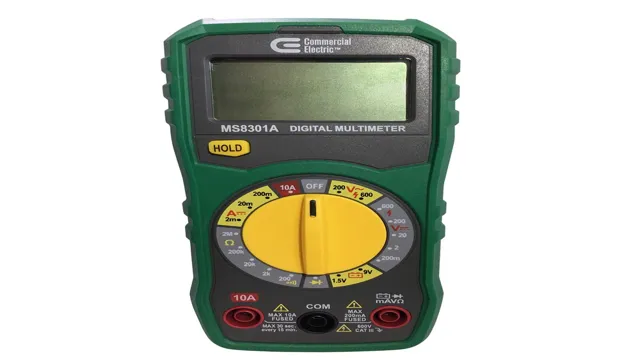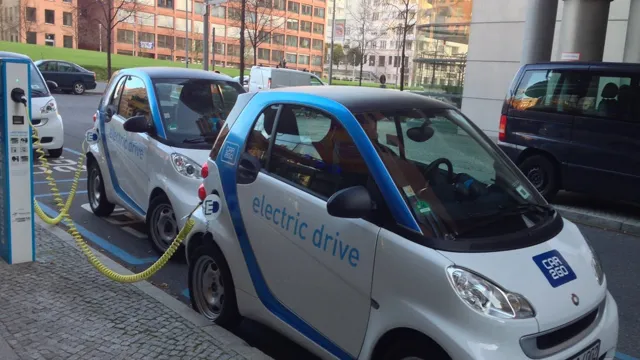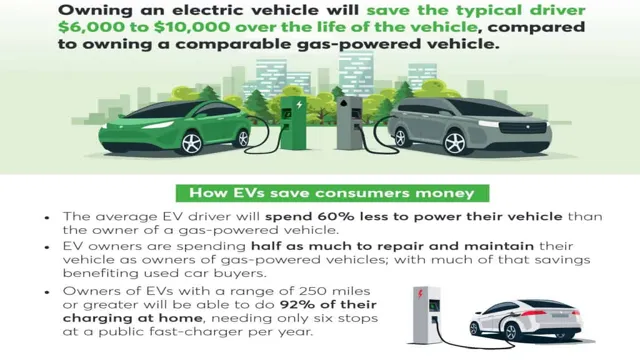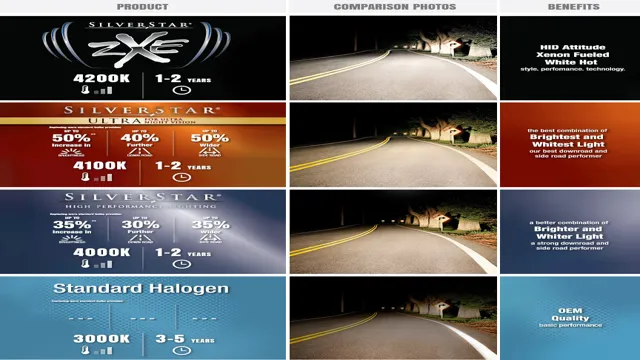Go Green with Ease: A Comprehensive Guide to Electric Car Conversion
Have you ever considered converting your gas guzzling car into an electric one? With the rise of electric vehicles, many people are looking for ways to make their current car more environmentally friendly and cost-effective. Fortunately, there’s a solution- an electric car conversion! An electric car conversion involves retrofitting your traditional gas-powered vehicle with an electric motor and battery pack, giving you the freedom to run your car on clean, green electricity. The process may sound daunting, but with the Electric Car Conversion Guide, it doesn’t have to be.
This comprehensive guide takes you through every step of the conversion process, from sourcing affordable parts to installing the electric motor. You’ll learn about the different types of electric drivetrains, battery technologies, and charging options available, as well as the tools and skills you’ll need to get the job done. Whether you’re a DIY enthusiast or just looking to save money on fuel costs in the long run, this guide has got you covered.
Plus, by converting your car to electric, not only will you be reducing your carbon footprint, but you’ll also be joining the growing community of EV enthusiasts who are driving the shift towards a sustainable future. So, are you ready to take the first step towards a cleaner, greener ride?
Why Convert to an Electric Car?
Converting to an electric car can be a smart move for a number of reasons. One of the biggest benefits of electric vehicles is their environmental friendliness, as they produce lower emissions than traditional gasoline-powered vehicles. In addition, electric cars are often cheaper to maintain and operate, as they require less frequent trips to the gas station, have fewer moving parts, and boast higher fuel efficiency.
Furthermore, electric cars can offer a more enjoyable driving experience, with smoother acceleration, less engine noise, and greater convenience thanks to features like remote charging and automatic updates. While converting your existing car to electric may require some investment upfront, with the right electric car conversion guide, you can make the transition as seamless and affordable as possible, allowing you to take advantage of all the benefits of electric vehicles without having to splurge on a brand new car.
Save Money on Gas
If you’re looking to save money on gas, then converting to an electric car is definitely worth considering. Not only will you be able to say goodbye to fluctuating gas prices, but you’ll also be doing your part for the environment. Electric cars run on battery power, which means you won’t need to fill up at the gas pump anymore.
The initial cost of an electric car may be higher than a gas-powered car, but over time, you’ll save money on fuel costs and maintenance. Plus, many states offer incentives and rebates for purchasing electric cars, which can help offset the cost. So why not make the switch to an electric car and start saving money in the long run while helping to reduce your eco-footprint?

Reduce Carbon Footprint
Electric Car Are you looking to make a positive impact on the environment and reduce your carbon footprint? Converting to an electric car is a great way to do just that. Not only do electric cars emit less greenhouse gases than traditional gas-powered cars, but they also use renewable energy to power their batteries. This means that not only are you reducing your own carbon emissions, but you’re also helping to reduce the carbon emissions of the power plants that supply your electric car’s energy.
Aside from the environmental benefits, there are plenty of practical reasons to switch to an electric car. For one, they’re incredibly efficient and require far less maintenance than traditional cars. With fewer moving parts, there’s less that can go wrong, meaning fewer expensive repairs and less time spent in the shop.
Plus, electric cars are incredibly quiet and smooth, providing a relaxing and comfortable driving experience. Of course, there are some potential downsides to owning an electric car. They generally have a shorter range than traditional cars, meaning you’ll have to plan your trips and make sure you have access to charging stations.
Additionally, electric cars can be more expensive than traditional cars, although prices are dropping as the technology becomes more widespread. Overall, the benefits of owning an electric car far outweigh the potential drawbacks. With their eco-friendliness, efficiency, and low maintenance costs, electric cars are the way of the future.
So, if you’re looking to make a positive change and reduce your carbon footprint, consider making the switch to an electric car today.
Increased Performance
Electric car conversion is becoming increasingly popular among car enthusiasts due to many benefits, one of which is increased performance. With advanced motor technology, electric cars boast faster acceleration and top speeds compared to their gas-powered counterparts. This is because electric cars deliver instant torque to the wheels, making them more responsive and efficient.
Additionally, electric cars’ efficient regenerative braking system converts kinetic energy into electric power, which can recharge the batteries while decelerating. Thus, the battery can store more energy, resulting in longer ranges and improved performance. In sum, swapping the traditional engine for an electric motor in a car can make it more powerful, efficient, and eco-friendly by reducing greenhouse gas emissions and cutting down on fuel costs.
Choosing a Vehicle to Convert
When it comes to converting a vehicle to electric, there are several factors to consider in order to choose the right one for your needs. The first and most important thing is to make sure the vehicle is structurally sound, with a good chassis and body that can handle the added weight of the batteries and electric motor. Additionally, you want to look for a vehicle with a good range, as this will determine how far you can travel on a single charge.
Other factors to consider may include the availability of parts and support for your chosen vehicle model, as well as the ease of installing an electric motor and battery system. Ultimately, the key is to find a vehicle that meets your specific needs and budget for converting to electric. With our electric car conversion guide, you’ll have all the information you need to make the best choice for your project.
Budget and Goals
When choosing a vehicle to convert, there are many factors to consider, but two of the most important ones are your budget and your goals. Your budget will determine the type of vehicle you can afford, as well as the extent of the conversion you can undertake. If your budget is limited, you may want to consider a used van that can be outfitted with basic amenities such as a bed, kitchenette, and storage.
On the other hand, if you have a larger budget, you may be able to invest in a newer and more spacious vehicle that can accommodate more features such as a bathroom, solar panels, and a heating system. In addition to your budget, your goals for the conversion will also play a role in determining the type of vehicle you choose. Are you planning to live in the vehicle full-time or just use it for weekend trips? Will you be traveling solo or with a partner or family? Do you plan to boondock in remote locations or stick to established campsites with full amenities? These are all questions that will help you determine the size, layout, and features of the vehicle that best suits your needs.
Ultimately, the key is to strike a balance between your budget and your goals. You don’t want to overspend on a vehicle that will be underutilized, but you also don’t want to skimp on features that are essential to your lifestyle and comfort. By taking the time to assess your needs and do your research, you can find a vehicle that fits both your budget and your goals.
And remember, the beauty of a conversion is that it can always be customized and upgraded over time as your needs and budget change.
Finding a Suitable Donor Car
When it comes to choosing a vehicle to convert into an electric car, the first step is finding a suitable donor car. Ideally, you want a car that is in good condition with a solid and intact body structure, as the body will be a critical component of the electric conversion. Look for vehicles with a curb weight that is not too heavy, as this will make the electric conversion more efficient.
Additionally, many electric conversion enthusiasts prefer using cars with rear-wheel drive and manual transmissions, as they tend to be easier to convert due to their simpler design. However, keep in mind that the vehicle’s battery pack size and placement will largely depend on the donor car’s available space. Ultimately, your chosen donor car should suit your driving needs and budget, while also providing an adequate platform for an electric conversion.
Understanding Electric Car Components
If you’re thinking about an electric car conversion, it’s essential to understand the components that make up an electric vehicle. The most visible difference between an electric and a gasoline-powered car is the electric motor. Instead of an internal combustion engine, an electric motor provides power to the vehicle’s wheels.
But there’s much more to an electric car than just the motor. You’ll need a high-voltage battery pack to store the energy that powers the motor, and a controller to manage the flow of electricity from the battery to the motor. Additionally, an electric car requires a charging unit to recharge the battery pack when it runs low.
Every electric car conversion is unique, depending on the type of vehicle, the size of the battery pack, the motor output, and other factors. If you’re considering an electric car conversion, make sure you do your research to ensure you have all the necessary components for a successful conversion.
Battery Types and Capacity
When it comes to electric cars, understanding the different battery types and capacities is crucial. The two main types of electric car batteries are lithium-ion and lead-acid, with lithium-ion being the more common and efficient of the two. Capacity, on the other hand, refers to the amount of energy a car battery can store and use for propulsion.
The range of an electric car largely depends on the battery capacity, so it’s important to consider your driving needs when choosing a car with the appropriate capacity. Additionally, the type of driving you do and the weather conditions in your area can also affect battery performance. Ultimately, selecting the right battery type and capacity for your electric car can make a significant difference in your driving experience and help you get the most out of your vehicle.
Motor Types and Power
Electric car motors come in three main types: AC, DC, and induction. Each motor type has its own strengths and weaknesses, but all electric motors are powerful and efficient. AC motors are commonly used for electric cars because they can be easily controlled and require less maintenance.
DC motors, on the other hand, are known for their durability and torque, making them ideal for heavy-duty applications like trucks or buses. Induction motors are less common but offer good performance at high speeds. When it comes to power, electric cars can range from around 100 horsepower to over 1,000 horsepower depending on the make and model.
But it’s not just about power; electric cars also have instant torque, meaning they can accelerate quickly and smoothly. All in all, the various motor types and power options available for electric cars offer a wide range of choices for drivers looking for a more sustainable and efficient way to get around.
Tools and Equipment Needed for Conversion
If you’re considering converting a car to run on electric power, you’ll need some specific tools and equipment to get started. First and foremost, you’ll need a high-quality electric motor, along with a controller to regulate its power output. In addition, you’ll need a pack of batteries to store and deliver the energy needed to run the motor.
Depending on your vehicle’s design and requirements, you may also need to install a new differential, suspension, or other parts. To connect all these components together, you’ll need a variety of wiring and connectors, as well as an on-board charger to keep your batteries charged up. Other helpful tools and equipment might include a welder, drill, saw, and other hand tools to make modifications to your vehicle.
With the right tools and equipment, a bit of know-how, and some perseverance, you can convert almost any car into an electric vehicle that runs clean and efficiently!
Basic Hand Tools
When it comes to converting a van into a livable space, there are a few basic hand tools that you absolutely need. A reliable drill with various drill bits is a must-have for putting up walls, cabinets, and other structures. A saw, whether it’s a handheld jigsaw or standardized circular saw, will be needed to cut lumber and other materials.
Screwdrivers, pliers, and wrenches will also be necessary for fastening screws and bolts and making any necessary plumbing adjustments. Other tools to consider include a tape measure, level, and angle finder. Remember, having the right tools makes the conversion process smoother and ensures that your van is safe and secure for your travels.
So, invest in quality tools, and you’ll be ready to tackle any DIY van conversion project with confidence.
Torque Wrench
A torque wrench is an essential tool that you will need if you are considering converting your car’s engine to a hybrid or electric one. This tool is necessary to tighten bolts and nuts to a specific torque value, which is crucial to ensure that the components of the engine are secure and functioning properly. When converting your engine, you will need to use a torque wrench to tighten various components, including the motor mounts, transmission, and other parts.
The torque wrench will help you avoid under-tightening or over-tightening, which can lead to engine failure or damaged parts. Additionally, you will need other basic tools, such as sockets, wrenches, and pliers, to complete the conversion process. Make sure that you have all the necessary tools and equipment before you begin the conversion process to ensure that everything goes smoothly.
Battery Management System
When it comes to converting a gasoline vehicle into an electric one, the battery management system (BMS) is a critical component that must be carefully selected and installed. One tool that is essential for this process is a multimeter, which can measure voltage, current, and resistance in the battery pack. Another crucial piece of equipment is a charger that is designed specifically for the type of batteries being used in the conversion.
It is also important to have access to a computer with software that can monitor and adjust the BMS settings as needed. Additionally, safety gear such as gloves and goggles should be worn when handling the batteries and other electrical components. With these tools and precautions in place, the conversion process can be carried out safely and effectively.
Step-by-Step Conversion Process
Converting a gas car to an electric car can be a bit overwhelming at first glance, but with the right guide and tools, it can be an exciting and fulfilling experience. Here is a step-by-step process to help you through the conversion. First, remove the fuel system and exhaust components and install the electric motor and controller.
Next, install the battery pack, charger, and BMS. You’ll need to modify the suspension and brakes to handle the extra weight of the battery pack. The electrical system will also need modifications, including wiring and fusing.
You can also add electronic displays and gauges to monitor the electric car’s performance. Finally, complete the finishing touches, including bodywork, paint, and interior modifications. At this point, you can take your new electric car for a spin and enjoy the fruits of your labor.
With this electric car conversion guide, you can convert your gas car to an electric car and help promote a cleaner environment while saving money on gas expenses.
Removing the Engine and Fuel System
Removing the engine and fuel system is one of the first and most critical steps in any car conversion process. First, disconnect the battery and drain any remaining fuel from the tank. Then remove the exhaust system, cooling system, and electrical wiring from the engine.
Once disconnected, remove the engine and fuel system as a unit. This often involves unbolting the engine mounts and lifting the engine out of the car. If you plan on reusing the engine, it’s essential to label and organize all parts as they’re removed.
Proper organization and labeling will make reassembly a much smoother process. Removing these important components of the car can be a daunting task, but it’s an essential part of any conversion project. By taking your time and being meticulous in the process, you’ll be on your way to creating the car of your dreams – powered by renewable energy.
Installing the Motor and Batteries
If you’re looking to convert your bicycle into an ebike, one of the first steps is to install the motors and batteries. The process is simple and can be done in a few hours. First, you need to choose an appropriate motor and make sure it fits your bike’s specifications.
Typically, you’ll need a front or rear wheel hub motor. Once you have the motor, you can start the installation process. Begin by removing the wheel from the bike and attaching the motor to the hub.
Make sure to connect the wires properly and securely. Next, mount the battery onto the bike frame or carrier. Connect the battery to the controller and the motor.
Finally, test the bike for functionality before taking it for a ride. With the motor and battery successfully installed, you’re one step closer to enjoying the benefits of an e-bike.
Wiring and Testing
In order to convert a gas car to an electric car, one of the most important steps is to wire and test the new electric components. This process involves removing the gas engine and installing an electric motor, battery pack, controller, and charging system. It’s essential to follow a step-by-step guide and use high-quality components to ensure a smooth and efficient conversion.
Wiring the components correctly is crucial, as any mistakes or loose connections can lead to dangerous situations and damage to the car. Once the wiring is complete, it’s time to test the system to make sure everything is working properly. This includes checking the voltage, current, and power output of the motor and controller and making any necessary adjustments.
Overall, wiring and testing are critical aspects of converting a gas car to electric and require careful attention and expertise to ensure a successful conversion.
Maintenance and Upgrades
An electric car conversion guide is an excellent resource for those who want to convert their gasoline-powered car into an electric one, reducing their carbon footprint and saving money on fuel in the process. Maintenance and upgrades are vital to ensuring that an electric conversion runs smoothly and efficiently. Regular maintenance is critical to keep the electric components in optimal condition, and yearly upgrades to the battery or charging system can ensure maximum range and quicker charging times.
Upgrades to the suspension and brakes can also be essential for safety and handling, as electric cars can be heavier than gasoline ones due to their battery weight. Additionally, replacing old or worn-out tires can help lower rolling resistance and increase the vehicle’s overall range, ultimately resulting in a more enjoyable and cost-effective driving experience. With proper maintenance and upgrades, an electric car conversion can be a long-term investment that provides significant savings and environmental benefits.
Battery Maintenance
Battery maintenance is a crucial part of getting the most out of your electronic devices. It’s important to keep your devices charged and to know how to maintain your battery so you can keep it healthy for a long time. One way to maintain your battery is to avoid charging it to full capacity.
While it might seem like the best idea to charge the battery all the way, it can actually cause damage over time. It’s also important to keep your battery cool and not let it overheat. Another way to maintain your battery is to upgrade it when necessary.
If your battery is old or no longer holding a charge well, it might be time to invest in a new battery. Upgrading your battery can help your device run more efficiently and can save you money in the long run. Remember, proper battery maintenance is key to keeping your devices running smoothly.
So, don’t neglect it, and watch your battery life soar!
Upgrade Options
As your business grows, you’ll need to think about maintenance and upgrades to keep your technology up to speed with your operations. Upgrades can include increasing storage capacity, adding additional features, or installing the latest software updates. With an eye on the budget, you’ll also need to balance the costs of upgrades with the benefits they provide.
One option is to purchase new hardware or software outright. This can be costly, but may make sense if the upgrade offers significant improvements. Another option is to lease equipment or use a cloud-based service, which can be more affordable and offer better scalability.
Whatever route you choose, it’s important to have a plan in place for regular maintenance and upgrades to keep your business running smoothly.
Conclusion
So there you have it – the ultimate guide to converting your gas-guzzling vehicle into an eco-friendly, futuristic electric car. Not only will you be doing your part for the environment by reducing harmful emissions, but you’ll also be saving money on gas and maintenance costs. And let’s be honest, there’s nothing quite like the feeling of zipping around town in a sleek, silent electric vehicle that turns heads and leaves a lasting impression.
So why wait? Start your conversion journey today and join the growing wave of environmentally-conscious drivers who are paving the way to a brighter, cleaner, and more sustainable future!”
FAQs
What is an electric car conversion guide?
An electric car conversion guide is a step-by-step manual that guides car owners on how to convert their petrol or diesel cars to run solely on electricity.
Is it legal to convert a petrol car to electric in all countries?
No, it is not legal to convert a petrol car to electric in all countries. In some countries, there are strict regulations, and it is illegal to do so without proper documentation and permission.
How much does it cost to convert a car to electric?
The cost to convert a car to electric varies depending on the make and model of the car, as well as the desired range and performance of the electric car. On average, it could cost anywhere between $10,000 to $20,000.
Do I need to have technical knowledge to do an electric car conversion?
While it is not necessary to have advanced technical knowledge, having a basic understanding of electrical systems and mechanical engineering is beneficial. It is also recommended to seek the help of a professional mechanic or an electrician for a successful electric car conversion.







